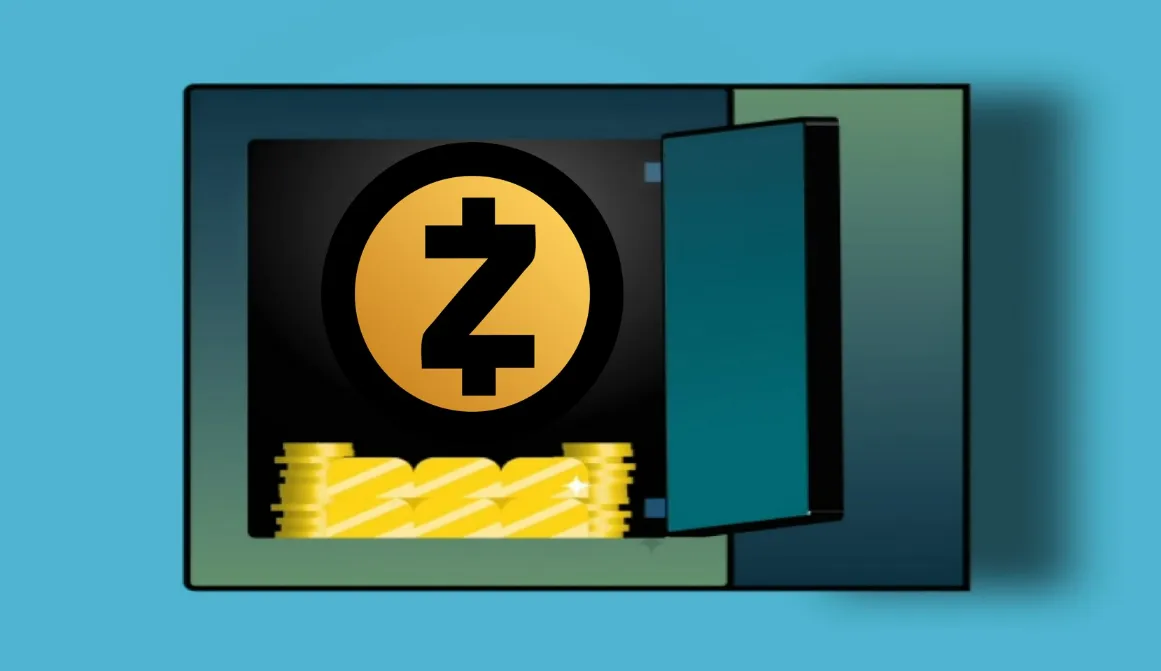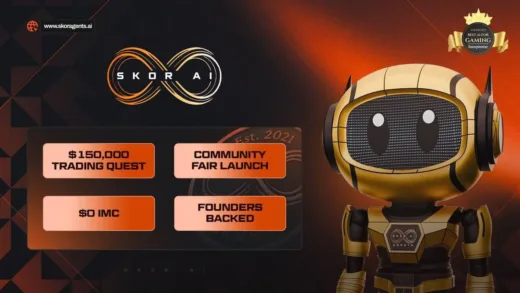So you’re interested in best layer 1 crypto projects, huh? The crypto space is heating up again with some exciting new ventures aiming to solve the scalability and decentralization challenges of previous blockchains. You’ve likely heard of the big players like Ethereum and Solana, but now there are a few new kids on the block you’ll want to keep an eye on.
Projects like Kadena, Azero, Agoric, Sui, and Aptos are building brand new blockchains from scratch with the goal of overcoming the limitations of today’s networks. These newcomers are taking innovative approaches to consensus, sharding, and governance that could shape the future of decentralized technology. If you’re looking to get in on the ground floor of the next breakthrough in crypto, these layer 1 projects are the ones to watch. The teams behind them have ambitious visions for unlocking web3’s true potential. While risky, the rewards for backing the right horse early on could be huge. So saddle up, the new generation of blockchains is ready to ride.
What Are Layer 1 Blockchains and Why Do They Matter?
Layer 1 blockchains are the base networks that provide security and consensus for cryptocurrencies. They’re the foundation that decentralized apps (dapps) and other blockchain projects are built on top of. Some of the biggest names are Bitcoin, Ethereum, and Binance Smart Chain. But why do new layer 1s matter?
A few reasons. First, greater scalability. Newer blockchains are designed to handle thousands of transactions per second, compared to just a few for Bitcoin. This means dapps that run on them can operate much more smoothly.
Second, lower fees. The high volume of transactions means lower costs per transaction. Some new layer 1s have fees of just a fraction of a cent. This makes them usable for small, everyday crypto payments.
Finally, interoperability. The latest layer 1s are built to work together, so assets and data can be transferred between different blockchains. This connectivity will unlock all kinds of new use cases for crypto and open up the space to mainstream markets.
A few of the most promising new layer 1 projects are Kadena, Azero, Agoric, Sui, and Aptos. Each has a unique approach, but they share the common goals of scalability, affordability, and interoperability.
While it’s still early days, new layer 1 blockchains could transform crypto in the coming years. Keep an eye on these next-generation networks – they might just shape the future of decentralized finance and beyond. The possibilities are endlessly exciting!
Best Layer 1 Crypto Projects
1. Kadena – The Scalable and Secure Layer 1

Kadena is building a brand new layer 1 blockchain from scratch, designed for scale and security. Unlike the chains you know and love, Kadena isn’t a clone of Bitcoin or Ethereum. Instead, they developed their own consensus algorithm called Chainweb that can process hundreds of transactions per second.
Chainweb works by braiding together multiple parallel chains into a network that can achieve high throughput without sacrificing decentralization or security. The network is made up of up to 20 individual blockchains, so there are no single points of failure and no scalability bottlenecks.
Kadena also has a smart contract language called Pact that’s designed for formal verification. That means Pact contracts can be mathematically proven to work as intended before they’re deployed on-chain. Bugs and exploits are a thing of the past!
The Kadena ecosystem already has live apps and DeFi products running on their mainnet. And with multiple exchange listings secured, their native KDA token is becoming more widely available.
So if you’re on the hunt for a new layer 1 that actually solves the blockchain trilemma, Kadena is one project worth keeping an eye on. With real technical innovations, a growing set of dapps and DeFi options, and lots of room for growth, Kadena could be poised to join the ranks of top platforms. DYOR, but the future is looking bright for this up and coming chain.
2. Aleph Zero (AZERO) – Bringing AI to Blockchain

Azero aims to combine AI and blockchain to enable next-generation smart contracts. They want to create an intelligent blockchain that can understand natural language and make complex decisions on its own.
Natural Language Smart Contracts
Azero is developing a way for people to create smart contracts using natural language like English instead of a programming language. This could open up blockchain technology to more people and make it easier to build decentralized apps (DApps).
Imagine being able to say something like, If the price of Bitcoin reaches $100,000, send an alert to all token holders and the Azero blockchain would automatically create the smart contract code to execute that logic. Azero believes natural language smart contracts could expand the possibilities for blockchain and make the technology more accessible.
Azero is still a new project, so the natural language smart contract functionality is still in development. But if they are able to achieve their vision, it could be a game changer for blockchain adoption and really open up the possibilities for DApps and DeFi. This is definitely an ambitious project to keep an eye on.
Focus on Scalability
In addition to natural language smart contracts, Azero is focused on scalability and interoperability. They aim to support fast transactions, low fees and connectivity with other blockchains. Azero uses a hybrid proof-of-stake and proof-of-work consensus algorithm to secure the network and enable high throughput.
Azero is still in testnet but shows a lot of promise if they are able to deliver on their vision of an intelligent, scalable blockchain platform with natural language smart contracts. This project could have major implications for the future of decentralized finance and blockchain applications. Definitely one to watch in the layer 1 blockchain space.
3. Agoric – Smart Contracts With JavaScript

Agoric is building a blockchain with smart contracts written in JavaScript, one of the world’s most popular programming languages. This makes Agoric more accessible to mainstream developers.
The Agoric blockchain uses secure distributed computing to execute untrusted JavaScript code. Developers can write decentralized apps (dApps) and smart contracts using familiar JavaScript tools and skills. The Agoric protocol provides scalability and security for running JavaScript smart contracts.
Some of the benefits of JavaScript smart contracts include:
- Easy for mainstream web developers to get started. If you know JavaScript, you can write smart contracts!
- Large ecosystem of open source libraries. Developers can leverage existing JS libraries and frameworks.
- Static type checking. The Agoric blockchain uses TypeScript, a typed superset of JavaScript, to provide static type safety for smart contracts.
The Agoric blockchain is still in active development. Key features on the roadmap include:
- Zoe, a toolkit for writing secure marketplaces and decentralized exchanges. Zoe provides a standard interface for creating and trading fungible and non-fungible tokens.
- SES, a secure EcmaScript (JavaScript) runtime with strong isolation properties for running untrusted code. SES is used to execute smart contracts in a secure sandboxed environment.
- Agoric DAO, a decentralized autonomous organization that will govern the Agoric blockchain and fund future development.
For developers interested in building dApps and smart contracts, Agoric is an exciting new option to keep an eye on. The ability to leverage your existing JavaScript skills and the robust ecosystem of JS tools and libraries could make Agoric a top choice for mainstream blockchain development.
4. Sui – Highly Scalable Blockchain

Sui is an exciting new layer 1 blockchain project focused on interoperability and scalability. The network uses a technique called zk-SNARK to achieve high throughput and low fees. Developers building on Sui will have access to Ethereum-compatible smart contracts and developer tools, making the transition to building on Sui straightforward.
Some of the main benefits of Sui are:
- Extremely low fees. Sui uses zk-SNARKs to compress transactions, allowing thousands of transactions per second at a tiny fraction of a cent per transaction.
- Sui will support bridges to transfer assets between Sui and other blockchains like Ethereum. This allows developers to tap into Sui’s speed and low fees while still accessing liquidity on other chains.
- Ethereum compatibility. Sui supports the Ethereum Virtual Machine, so Solidity smart contracts and developer tools can be reused on Sui with minimal changes. This makes building on Sui accessible to Ethereum developers.
- Scaling solution. Sui could serve as a scaling solution for Ethereum by allowing transactions and smart contract executions to be handled on Sui, then settled on the Ethereum mainnet. This could help reduce congestion and lower fees on Ethereum.
Sui is still in active development, with a testnet launch planned for later this year and a mainnet launch in 2022. While there are many new layer 1 projects vying for attention, Suis focus on interoperability, Ethereum compatibility, and incredibly low fees could help it stand out from the crowd. Developers interested in building scalable dapps with low transaction costs should keep an eye on Sui as it continues to progress.
5. Aptos – Scalable and secure blockchain

Aptos is a new layer 1 blockchain project aiming to solve scalability and security issues. The team is building a blockchain platform with high transaction throughput, low latency, and enhanced security.
Aptos claims their blockchain can handle 200,000 transactions per second, compared to Ethereum’s 15 transactions per second. They use a technology called Parallel Execution to achieve this, running multiple block producers in parallel instead of sequential blocks.
For security, Aptos uses a consensus algorithm called HotStuff. This leader-based protocol selects a new leader for each block, who then proposes a new block for validators to vote on. If the vote passes, the block is added to the chain. This approach prevents any single entity from controlling the network.
Aptos is also working on smart contracts that are more flexible, upgradable, and secure than other blockchains. Their Move language is designed specifically for blockchain, with built-in protections against common issues like infinite loops, overflowing storage, and mutable global state.
The Aptos team contains many of the original creators of Diem, (formerly Libra) including its ex-CTO. They raised $200 million to develop their layer 1 blockchain and plan to launch their mainnet in 2021.
With an experienced team, innovative technology, and significant funding, Aptos is one of the top new layer 1 projects to keep an eye on. They could emerge as a real competitor to Ethereum and other established blockchains if they are able to deliver on their promises of high performance, security, and next-generation smart contracts. The future is bright for this aptly named chain.
Conclusion
So there you have it, five of the most promising new layer 1 blockchain projects that are worth keeping an eye on. Any one of these could be the next Ethereum or Solana, revolutionizing the world of DeFi, NFTs, and web3. Do your own research, follow the communities, check out their tech and teams. See which ones spark your interest and consider getting in on the ground floor. The opportunities in this space are endless if you find the right projects. The future is unwritten, so why not get involved and help build it? The next generation of blockchain could be one of these layer 1s, so start paying attention now. You’ll be glad you did.











![[Sponsored] STG Energy Launches Breakthrough Cloud Mining Product to Democratize Crypto Mining 15 STG mining](https://coinfunda.com/wp-content/uploads/2025/02/STG-mining-520x293.webp)
![[Sponsored] Centralhash cloud mining platform easily obtains 100,000 US dollars of 16 central hash](https://coinfunda.com/wp-content/uploads/2025/02/central-hash-512x293.webp)